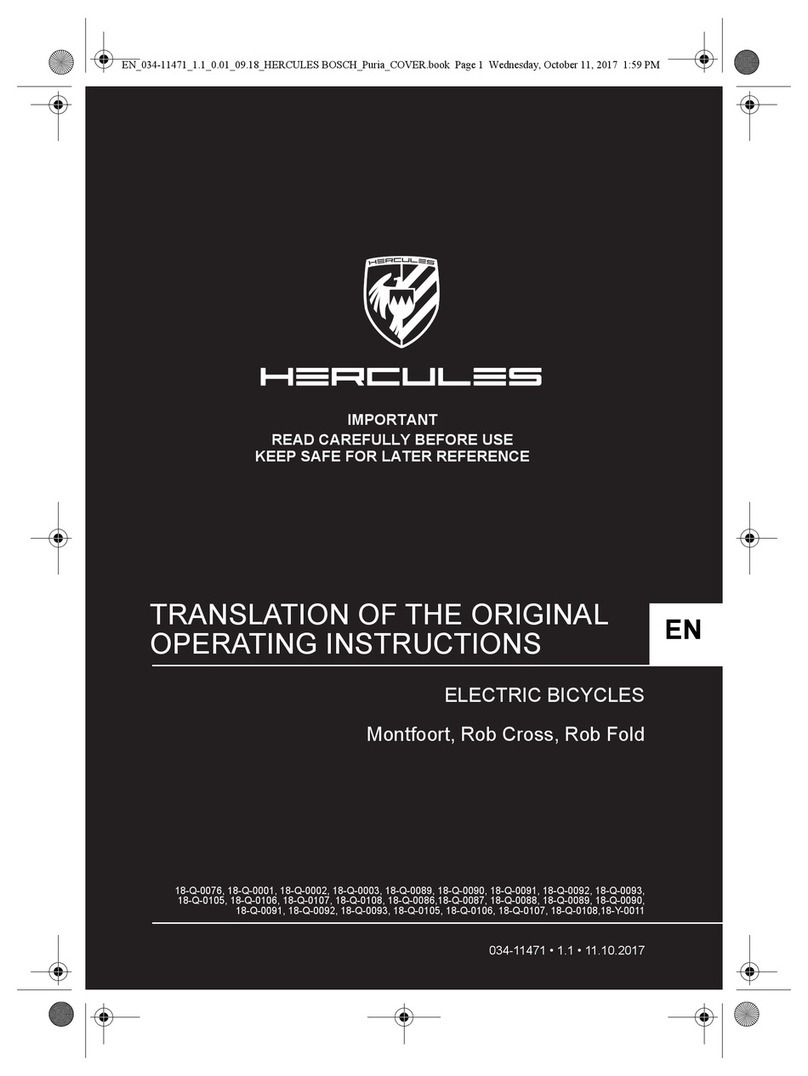Hercules FAZUA Futuro 10 FA 20" 252Wh 10G S Quick guide

TRANSLATION OF THE ORIGINAL OPERATING INSTRUCTIONS
IMPORTANT
READ CAREFULLY BEFORE USE
KEEP SAFE TO CONSULT AT A LATER DATE
Pedelecs
Futuro 10 FA 20" 252Wh 10G S
20-Y-0001
MY20H06-2 • 1.0 • 26. August 2019

MY20H06-2_1.0_26.08.2019 2
Contents
Contents
1 About these operating instructions 5
1.1 Manufacturer 5
1.2 Type number and model 5
1.3 Identifying the operating instructions 5
1.4 Laws, standards and directives 5
1.5 Subject to change 6
1.6 Language 6
1.7 For your safety 6
1.7.1 Instruction, training and customer service 6
1.7.2 Basic safety instructions 6
1.7.3 Warnings 6
1.7.4 Safety markings 6
1.8 For your information 7
1.8.1 Instructions for actions 7
1.8.2 Language conventions 7
1.8.3 Information on the nameplate 7
1.9 Nameplate 8
2 Safety 9
2.1 General warnings 9
2.2 Toxic substances 10
2.3 Requirements for the rider 11
2.4 Protection for vulnerable groups 11
2.5 Data privacy 11
2.6 Personal protective equipment 11
2.7 Safety markings and safety instructions 11
2.8 Emergency 12
2.8.1 What to do in an emergency 12
2.8.2 First aid treatment 12
2.8.3 Fighting fire 12
2.8.4 Leaking fluids 13
2.8.4.1 Brake fluid 13
2.8.4.2 Oils and lubricants from the fork 13
2.8.4.3 Oils and lubricants from the rear frame
damper 13
3Overview 14
3.1 Description 15
3.1.1 Wheel and suspension 15
3.1.1.1 Valve 15
3.1.2 Suspension 15
3.1.2.1 Steel suspension fork structure 16
3.1.2.2 Air suspension fork structure 16
3.1.2.3 Structure of the FOX rear frame damper 17
3.1.2.4 Structure of the Suntour rear frame
damper 17
3.1.3 Brake system 17
3.1.3.1 Rim brake 17
3.1.3.2 Disc brake 18
3.1.3.3 Back-pedal brake 18
3.1.3.4 ABS 19
3.1.4 Electric drive system 20
3.1.5 Drive unit 20
3.1.6 Rechargeable battery 21
3.1.7 Control panel 21
3.2 Charger 22
3.3 Proper use 23
3.4 Improper use 24
3.5 Technical data 25
3.5.1 Pedelec 25
3.5.2 Emissions 26
3.5.3 Tightening torque 26
3.6 Environmental requirements 27
3.7 Description of controls and screens 29
3.7.1 Handlebars 29
3.7.2 Rechargeable battery 29
3.7.3 Control panel on-screen indicators 29
3.7.4 Control panel 29
3.7.4.1 Display bar 29
3.7.4.2 Level of assistance 30
4 Transporting and storing 31
4.1 Physical transport characteristics 31
4.1.1 Dimensions during transportation 31
4.1.2 Transport weight 31
4.1.3 Designated handles/lifting points 31
4.2 Transporting 31
4.2.1 Transporting the battery 32
4.2.2 Shipping the battery 32
4.2.3 Using the brake transport securing
system 32
4.3 Storing 32
4.3.1 Break in operation 33
4.3.1.1 Preparing a break in operation 33
4.3.1.2 Taking out of operation 33
5 Assembly 34
5.1 Required tools 34
5.2 Unpacking 34
5.2.1 Scope of delivery 34
5.3 Commissioning 35
5.3.1 Checking the battery 35
5.3.2 Installing the wheel in the Suntour fork 35
5.3.2.1 Installing the wheel with screw-on axle
(15 mm) 35
5.3.2.2 Installing the wheel with screw-on axle
(20 mm) 36
5.3.2.3 Installing the wheel with a
quick release axle 37
5.3.3 Installing the wheel with a quick release 38
5.3.4 Installing the wheel in the FOX fork 39
5.3.4.1 Wheel with quick release (15 mm) 39
5.3.4.2 Adjusting the FOX quick release 40
5.3.4.3 Installing the wheel with Kabolt axles 40

MY20H06-2_1.0_26.08.2019 3
Contents
5.3.4.4 Checking the stem and handlebars 40
5.3.5 Pedelec sale 41
6Operation 42
6.1 Risks and hazards 42
6.1.1 Tips for a greater range 43
6.1.2 Personal protective equipment 43
6.2 Error messages 44
6.3 Before the first ride 45
6.3.1 Adjusting the saddle 45
6.3.1.1 Adjusting the saddle tilt 45
6.3.2 Determining the seat height 45
6.3.2.1 Adjusting the seat height with
quick release 45
6.3.2.2 Height-adjustable seat post 46
6.3.2.3 Adjusting the seat position 46
6.3.3 Adjusting the handlebars 47
6.3.3.1 Adjusting the stem 47
6.3.3.2 Adjusting the height of the handlebars 47
6.3.3.3 Turning the handlebars to the side 47
6.3.3.4 Checking the clamping force in quick
releases 48
6.3.3.5 Adjusting the quick release clamping
force 48
6.3.4 Adjusting the brake lever 48
6.3.4.1 Adjusting the pressure point on a
Magura brake lever 48
6.3.4.2 Adjusting the grip distance 49
6.3.4.3 Adjusting the grip distance on a
Magura brake lever 49
6.3.5 Adjusting the suspension of the
Suntour fork 50
6.3.5.1 Adjusting the negative deflection 50
6.3.5.2 Adjusting the air suspension fork
negative deflection 50
6.3.5.3 Adjusting the steel suspension fork
negative deflection 51
6.3.5.4 Adjusting the rebound 52
6.3.6 Adjusting the suspension of the
FOX fork 52
6.3.6.1 Adjusting the negative deflection 52
6.3.6.2 Adjusting the rebound 53
6.3.7 Setting the Suntour rear frame damper 54
6.3.7.1 Adjusting the negative deflection 54
6.3.7.2 Adjusting the rebound 54
6.3.7.3 Setting the compression 55
6.3.8 Setting the FOX rear frame damper 55
6.3.8.1 Adjusting the negative deflection 55
6.3.8.2 Adjusting the rebound 56
6.3.9 Retracting the brake linings 56
6.4 Accessories 57
6.4.1 Child seat 57
6.4.2 Bicycle trailers 58
6.4.3 Pannier rack 58
6.5 Before each ride 59
6.6 Check list before each ride 59
6.7 Using the kickstand 60
6.7.1 Raising the kickstand 60
6.7.1.1 Parking the pedelec 60
6.8 Using the pannier rack 60
6.9 Charger 61
6.9.1 Connecting the charger to the mains 62
6.10 Rechargeable battery 62
6.10.1 Charging the battery 63
6.10.1.1 Charging the battery in the drive unit 64
6.10.1.2 Charging the battery on the pedelec 65
6.10.2 Inserting the battery into the drive unit 65
6.10.3 Removing the battery from the drive unit 66
6.11 Drive unit 66
6.11.1 Installing the drive unit on the pedelec 66
6.11.2 Removing the drive unit from the
pedelec 66
6.12 Electric drive system 68
6.12.1 Switching on the electric drive system 68
6.12.2 Switching off the drive system 68
6.12.3 Drive system standstill 68
6.13 Control panel 69
6.13.1 Using the push assist system 69
6.13.2 Selecting the level of assistance 69
6.14 Brake 70
6.14.1 Using the brake lever 71
6.14.2 Using the back-pedal brake 72
6.15 Suspension and damping 72
6.15.1 Adjusting the compression of the
Fox fork 72
6.15.2 Adjusting the compression of the
Fox damper 72
6.15.3 Adjusting the compression of the
Suntour fork 73
6.16 Gear shift 73
6.16.1 Selecting gears 73
6.16.2 Using the hub gear 74
7 Cleaning and servicing 75
7.1 Cleaning after each ride 75
7.1.1 Cleaning the suspension fork 75
7.1.2 Cleaning the rear frame damper 75
7.1.3 Cleaning the pedals 75
7.2 Basic cleaning 76
7.2.1 Cleaning the frame 76
7.2.2 Cleaning the stem 76
7.2.3 Cleaning the rear frame damper 76
7.2.4 Cleaning the wheel 76
7.2.5 Cleaning the drive elements 76
7.2.6 Cleaning the chain 77
7.2.7 Cleaning the battery 77

MY20H06-2_1.0_26.08.2019 4
Contents
7.2.8 Cleaning the display 77
7.2.9 Cleaning the drive unit 77
7.2.10 Cleaning the brake 78
7.3 Servicing 78
7.3.1 Servicing the frame 78
7.3.2 Servicing the stem 78
7.3.3 Servicing the fork 78
7.3.4 Servicing the drive elements 78
7.3.5 Servicing the pedals 78
7.3.6 Servicing the chain 78
7.3.7 Servicing the drive elements 78
7.4 Maintenance 78
7.4.1 Wheel 78
7.4.2 Checking the tyres 79
7.4.3 Checking the rims 79
7.4.4 Checking and adjusting the
tyre pressure 79
7.4.4.1 Dunlop valve 79
7.4.4.2 Presta valve 80
7.4.4.3 Schrader valve 80
7.4.5 Brake system 80
7.4.6 Checking the brake linings for wear 80
7.4.7 Checking the pressure point 80
7.4.8 Checking the brake discs for wear 81
7.4.9 Electrical cables and brake cables 81
7.4.10 Gear shift 81
7.4.11 Stem 81
7.4.12 USB port 81
7.4.13 Checking the belt and chain tension 81
8 Maintenance 82
8.1 Axle with quick release 83
8.1.1 Checking the quick release 83
8.2 Adjusting the gear shift 83
8.2.1 Cable-operated gear shift, single-cable 84
8.2.2 Cable-operated gear shift, dual-cable 84
8.2.3 Cable-operated twist grip, dual-cable 84
9 Troubleshooting, fault clearance
and repair 85
9.1 Troubleshooting and fault clearance 85
9.1.1 The drive system or display do not
start up 85
9.1.2 Error messages 85
9.2 Assistance function 86
9.3 Rechargeable battery 87
9.4 Lighting 88
9.5 Display 88
9.6 Miscellaneous 88
9.7 Repair 90
9.7.1 Use original parts and lubricants only 90
9.7.2 Replacing the lighting 90
9.7.3 Setting the headlight 90
10 Recycling and disposal 91
11 Documents 92
11.1 Parts list 92
11.2 Assembly report 93
11.3 Maintenance log 95
12 Keyword index 98
13 Glossary 99
I. EC declaration of conformity 102

MY20H06-2_1.0_26.08.2019 5
About these operating instructions
1 About these operating instructions
Thank you for your trust!
HERCULES pedelecs are sporting equipment of
the highest quality – you have made a good
choice. Your specialist dealer has advised you
and assembled your product. Whether
maintenance, inspection, conversion or repair,
your specialist dealer will also be happy to assist
you in the future.
You receive these operating instructions with your
new pedelec. Please take a little time to become
familiar with your new pedelec and follow the tips
and suggestions in the operating instructions.
They will help you to enjoy your HERCULES
pedelec for a long time to come. We hope you
have fun and wish you well on all of your rides!
These operating instructions are designed for the
rider and the operator of the pedelec to ensure
that non-professionals can use the pedelec safely.
You can download the operating instructions onto
your mobile phone at the following address, so
that you can use them when you are out riding:
https://www.hercules-
bikes.de/de/de/index/
downloads.html
1.1 Manufacturer
The pedelec manufacturer is:
HERCULES GMBH
Longericher Straße 2
50739 Köln, Germany
Tel.: +49 4471 18735 0
Fax: +49 4471 18735 29
E-mail: [email protected]
Internet: www.hercules-bikes.de
1.2 Type number and model
The operating instructions are an integral part of
pedelecs with the following type numbers:
1.3 Identifying the operating
instructions
You will find the operating instructions
identification number at the bottom left-hand side
of each page. The identification number consists
of the document number, the version number and
the release date.
1.4 Laws, standards and directives
The operating instructions comply with the
essential requirements specified in:
• Machinery Directive 2006/42/EC
• Electromagnetic Compatibility Directive 2014/30/
EU
• ISO/DIS 20607:2018 Safety of machinery –
Instruction handbook – General drafting
principles
• EN 15194:2017 Cycles – Electrically power
assisted cycles – pedelec bicycles
• EN 11243:2016, Cycles – Luggage carriers for
bicycles – Requirements and test methods
• EN ISO 17100:2016-05, Translation Services –
Requirements for translation service.
Notice
The operating instructions are not a substitute for
personal instruction by the supplying specialist
dealer.
The operating instructions are an integral part of
the pedelec. Therefore, if it is re-sold at a later
time, they must be handed over to the subsequent
owner.
Instructions for the specialist dealer are highlighted in grey and
marked with a symbol. Specialist dealers have specialist
training and qualifications and are thus able to identify risks and
prevent hazards which may arise during maintenance, servicing
and repairs on the pedelec. Information for specialist staff does
not require non-professionals to take any action.
Type no. Model Pedelec type
20-Y-0001 Futuro 10 FA 20" 252Wh
10G S
City and trekking
bicycle
Table 1: Type number, model and pedelec type
Identification number MY20H06-2_1.0_26.08.2019
Table 2: Identification number
Table of contents
Other Hercules Bicycle manuals
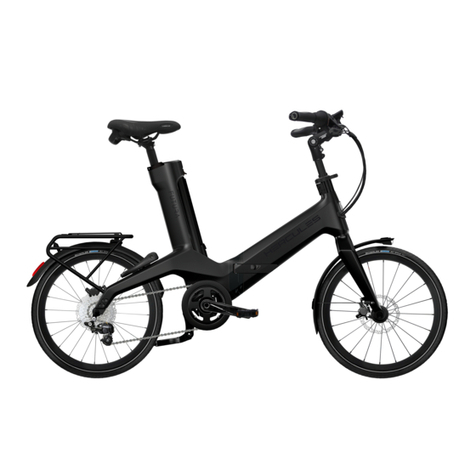
Hercules
Hercules Fazua Futura User manual

Hercules
Hercules Montfoort Cruise F7 User manual
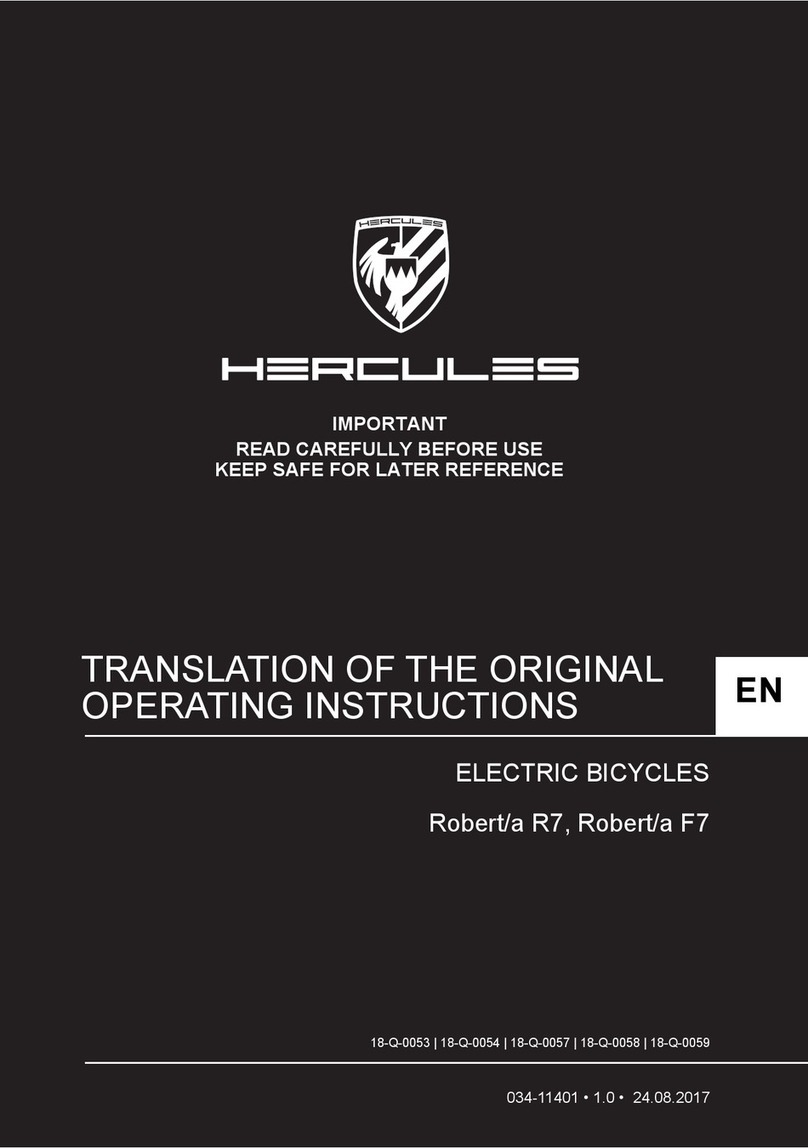
Hercules
Hercules Robert/a R7 Series User manual
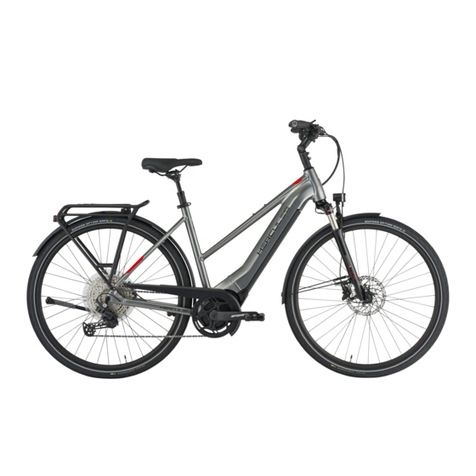
Hercules
Hercules PASERO COMP I-12 Quick guide

Hercules
Hercules Montfoort User manual

Hercules
Hercules PASERO Quick guide
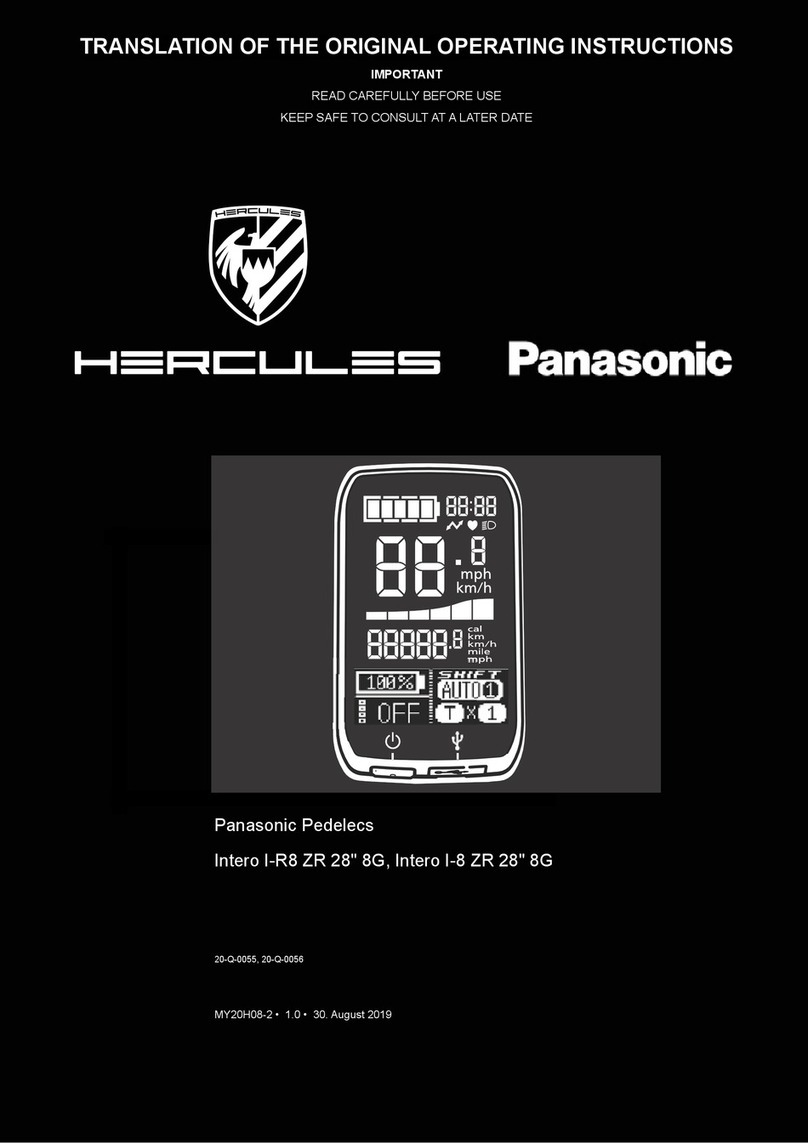
Hercules
Hercules Intero I-R8 ZR 28" 8G Series User manual

Hercules
Hercules Tessano Pro User manual

Hercules
Hercules NOS FS PRO Quick guide

Hercules
Hercules FUTURA SPORT 8.4 26 Quick guide
